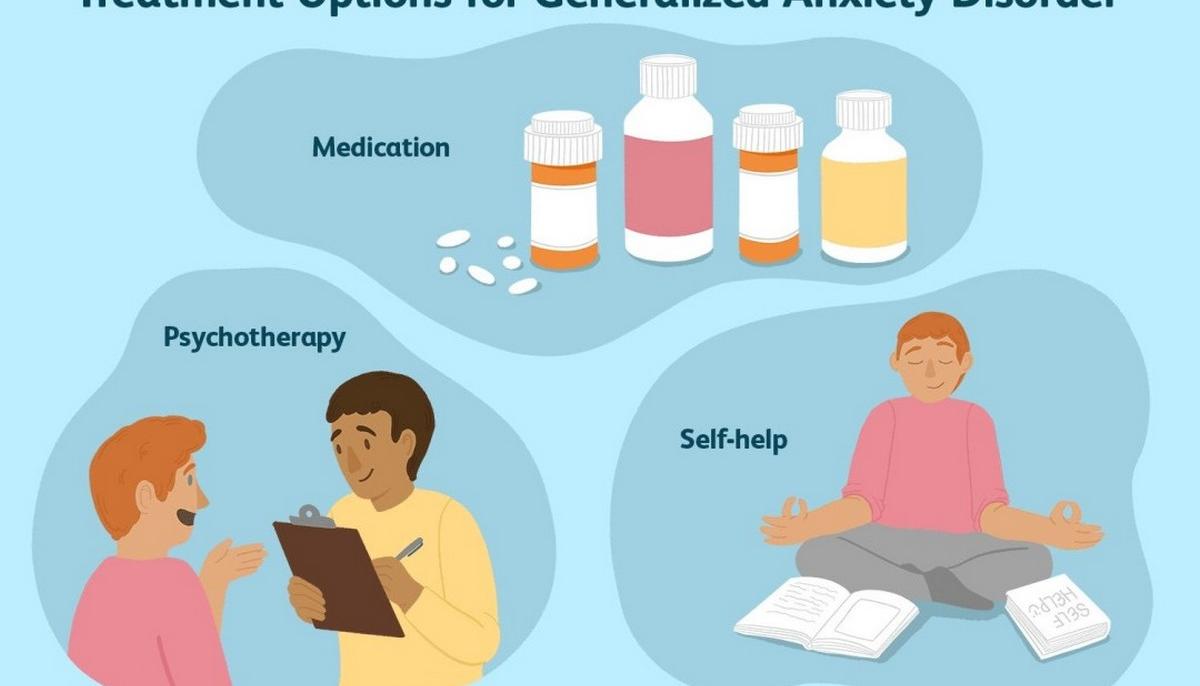Fundamentally, anxiety has an important role for survival, it prepares the body for the necessary fight or flight reactions in case of danger. Also, in moderate doses, it helps to identify potential problems in the future and, consequently, to act in the direction of preventing their occurrence. It is scientifically proven (Yerkes and Dodson's Curve) that a certain level of anxiety increases the ability to perform, but too high a level of anxiety inhibits this ability, acting like an obstacle. Therefore, anxiety is not in itself negative, but anxiety disorders present the need to seek specialized help.
Anxiety disorders differ from natural anxiety by persistence over a period of 6 months and by the ways in which they disrupt the life of the affected person, interfering either with performance at work, or with maintaining satisfactory social relationships, or with harmony in married life and even with all these aspects together. In anxiety disorders, the person is permanently in a state of alertness, but without a precise object. Thus, the body is always prepared to defend itself, without actually knowing what the dangers are. It is easy to understand how such a situation perpetuated over several months can lead to mental and physical exhaustion.
Anxiety disorders are characterized by an almost permanent rumination, like a spiral of thoughts that does not end with a solution. The person focuses so much on thoughts, on details, on the possibilities of something bad happening to him, that it becomes very difficult for him to be able to see the overall picture, to relate to the daily reality of his life.
In the category of anxiety disorders are included: panic disorder, specific phobia, social anxiety, obsessive-compulsive disorder, post-traumatic stress and generalized anxiety.
Panic disorder
Panic manifests itself through unexpected panic attacks and through the subsequent fear of having no more attacks or the fear of the implications of the panic attack on health. It is also accompanied by significant changes in behavior. People who suffer from panic disorder fear that they will either die or go crazy as a result of the panic attack. These fears are explained by the symptomatology of the panic attack, which includes: palpitations, strong heartbeats or acceleration of the heart rate; sweating; tremor or trembling; sensations of shortness of breath or strangulation; feeling of suffocation; chest pain or discomfort; nausea or abdominal discomfort; feeling of dizziness, imbalance, vertigo or fainting; derealization (the feeling of unreality) or depersonalization (detachment from oneself); paresthesias (numbness or tingling sensations); chills or hot flashes.
Untreated, panic can greatly restrict the range of activities that the person can carry out, which causes a decrease in self-esteem and permanent dissatisfaction. It can cause other problems such as depression or alcohol or drug use. Starting treatment (medication, psychotherapy or both) at the beginning of the appearance of this disorder can prevent the onset of agoraphobia and related disorders. But if the person is already depressed or consumes alcohol or substances at the time the treatment begins, these associated conditions must be addressed separately.
Specific phobia
Specific phobia is the intense, irrational fear of a certain object, a certain being or a certain circumstance. In most cases, the object of the phobia represents something that actually represented a danger to the human species. Common examples of such phobias are: fear of spiders (arachnophobia), fear of closed and narrow spaces (claustrophobia), fear of heights, fear of water, fear of dogs, fear of blood, fear of flying, etc.
People with specific phobia may never seek help, if the object of their phobia is easy to avoid, and avoiding it does not affect their quality of life and daily activities. In some cases, however, avoiding the object that causes panic is not enough, the panic attack being able to occur even when the person thinks about or sees a picture or a show with the thing/situation they are afraid of.
Social anxiety
Social phobia or social anxiety is the fear of certain social contexts. It can take a specific form, the fear of a situation that involves public exposure (eg: speaking in public, eating in public) or it can be generalized, the person fearing any situation in which he has to interact with other people, with the exception of members the family.
The fundamental fear behind this phobia is the fear of others' judgment. It is about the person's fear of not being able to handle the situation in question and of being labeled negatively by others.
Despite the fact that the person recognizes that his fear is irrational, he continues to show symptoms of anxiety (sweating, lump in the throat, tics, stammering) before and during a situation that requires the role of a social actor.
Obsessive-compulsive disorder
People suffering from obsessive-compulsive disorder have thoughts that worry them and that they try to control with the help of rituals. For example, if a person is afraid of germs, he will wash his hands very often, trying in this way to prevent the occurrence of a disease. If a person is afraid of thieves, he will check many times if he has locked the door before leaving home. It may even happen that a person develops rituals that, unlike the previous examples, are not directly related to the feared situation. Thus, in order to be successful in the exam, a person touches all the plants that come his way from the time he leaves home to the time he arrives in the exam room.
Paradoxically, instead of being able to control their fear with the help of rituals, these rituals end up controlling those who face this disorder. Any person can check several times if they have turned off the gas or if they have turned off the faucet before leaving home, but people with obsessive-compulsive disorder end up giving up important activities (going to work, for example) in order to carry out the rituals beginnings.
Posttraumatic stress
After a strong traumatic event, post-traumatic stress can occur. The person was either in a situation where he was close to death or his bodily integrity was threatened, or he witnessed such an event where someone was in a life and death situation. Usually, post-traumatic stress manifests itself within 3 months of the traumatic event and lasts more than a month. But sometimes, post-traumatic stress can set in years after the event.
Manifestations of post-traumatic stress include remembering some images from the event, recurring dreams in which the stressful situation appears, avoiding circumstances that remind of the event, etc. Posttraumatic stress can severely affect a person's life, reaching agoraphobia (for example, in the case of a rape or a violent robbery that took place in the street).
Generalized anxiety
People who face generalized anxiety show an almost permanent tension and a concern for ordinary life situations, which manifests itself during at least 6 months. These people may even feel at the beginning of each day that they will not be able to make it through the day. Although they are aware of the unrealistic nature of this concern, it is difficult for them to control their own concern.
The symptoms that are associated with generalized anxiety are the following: restlessness or the feeling of being on edge; the feeling of quickly acquired fatigue; difficulty concentrating or the feeling of mental emptiness; irritability; muscle tension; sleep disturbance (difficulty falling asleep or staying asleep, or restless and restless sleep).
Treatment of anxiety disorders
In the case of any of the anxiety disorders, it is possible to intervene either with medication (treatment prescribed by a psychiatrist), or through counseling or psychotherapy, or combining the two options. The pills prescribed by the psychiatrist can help the patient calm down and benefit better from psychotherapy. Anxious people feel a high degree of discomfort and want a quick solution to their situation, which causes them to try numerous treatments without completing them and, consequently, without reaching a solution. In this context, the danger is that of acquiring the feeling that there is nothing to help them get out of the situation they are in.
It is important for these people to be patient and to carry out a started therapeutic process to the end. Of course, there cannot be a standard solution for all people suffering from anxiety disorders, given the unique personality of each person. Therefore, it is recommended to try other solutions in case the previous treatment, completed, did not lead to an exit from the discomfort situation or at least to a significant improvement in mood and quality of life.
If you feel a fear that you cannot define, but which is present (anxiety), Medicover will be at your disposal with the following psychological services: psychotherapy, psychological counseling and relaxation techniques.







